Samsung QN900F review: Proving 8K still has a place
Samsung’s second-tier 8K TV is a better bet than its flagship

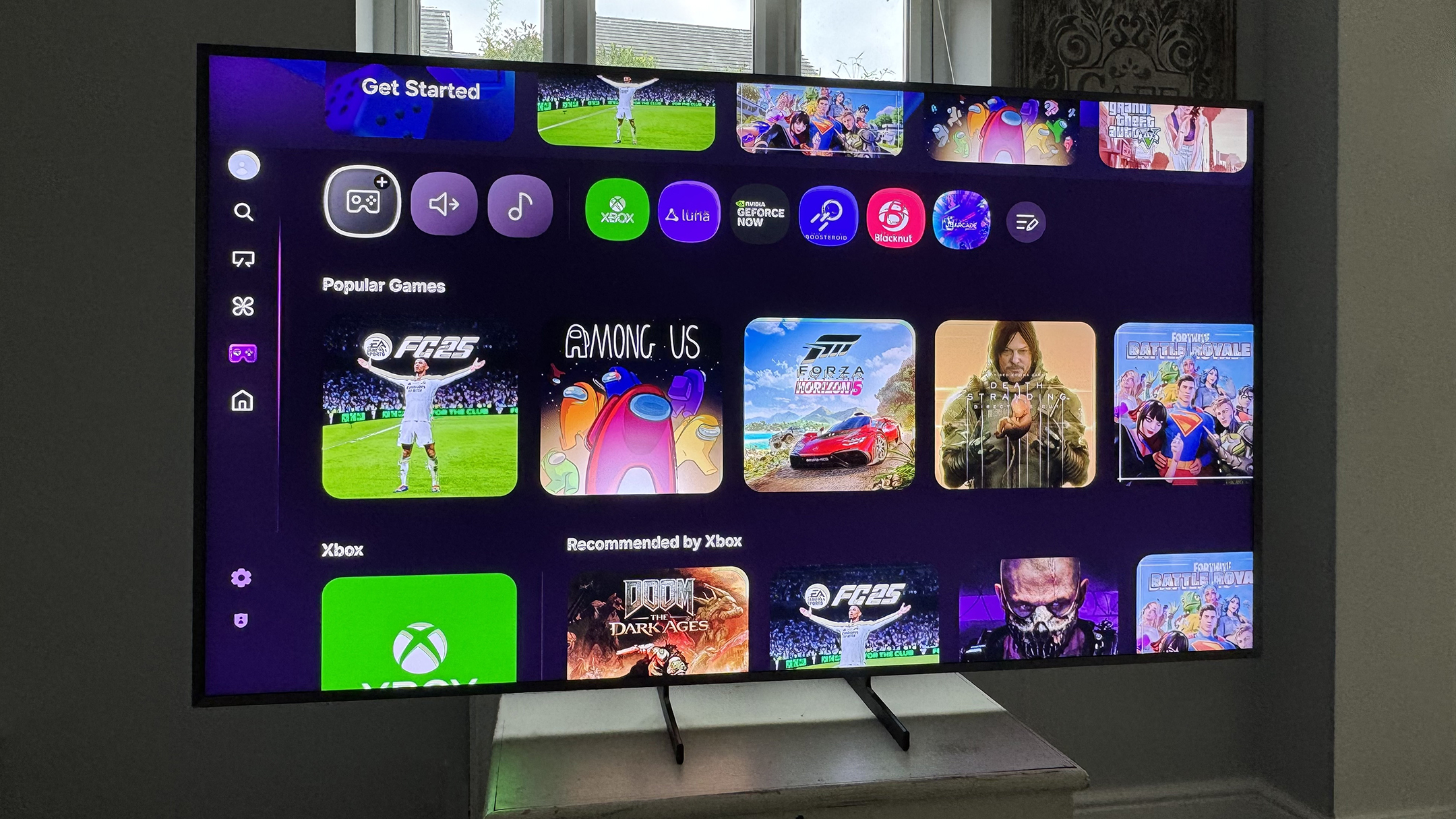
With 8K content still in painfully short supply, 8K TVs are all too easy to ignore. Samsung’s QN900F series is here to tell you, though, that you actually dismiss 8K at your peril, as it makes a strong case for the resolution being a worthwhile force – even in today’s mostly 4K and HD world. Its outstanding upscaling technology and general performance level across pretty much every other aspect of picture quality outguns every other model in Samsung’s current LCD TV range – including Samsung’s own flagship QN990F 8K series.
-
+
Thousands cheaper than the QN990F models
-
+
Outstanding upscaling performance
-
+
Brilliant pictures in all other areas
-
-
Not much native 8K content around
-
-
More expensive than most 4K TVs
-
-
No Dolby Vision support
Why you can trust T3

While every other brand has dropped 8K for 2025, Samsung has gamely soldiered on, launching not one but two separate 8K TV series. We recently delivered our thoughts on the expensive and ultimately slightly flawed QN990F flagship 8K range, but now it’s time for the step-down QN900F series to make its case.
On paper the QN900F should simply not be as good as the QN990F. It doesn’t have as many local dimming zones, doesn't use such a cutting edge panel, doesn’t boast Samsung’s most potent processor, and doesn’t sport as gleamingly futuristic a design. Experience of past Samsung 8K ranges would also lead us to expect the QN990F range to really push picture quality boundaries.
It doesn’t take long, though, to realise that the QN900F is actually the better of Samsung’s 8K bets – and not just because it’s thousands cheaper, either. Though that obviously helps in making it arguably the best 8K TV money can buy...
Price & Availability
I’ll be focusing on the 75-inch QN900F model for this review. That costs £3,899 / $3,399 / €3,469 at the time of writing. That's a price which: a) makes me wish I lived in the US rather than the UK; and, b) substantially undercuts the price of the same-sized QN990F.
That's despite the flagship model now dropping from its original eye-watering price, when we first test tested it. That’s enough to buy all sorts of good quality secondary AV gear, or a veritable mountain of the 4K Blu-ray discs that deserve to become the QN900F’s diet of choice.
The QN900F series also includes 65- and 85-inch screen sizes, available for £2,599 / $2,799 / €2,499 and £5,799 / $4,299 / €5,259 respectively. The 85-inch model’s pricing again makes me very jealous of our US readers' position.
What's New?
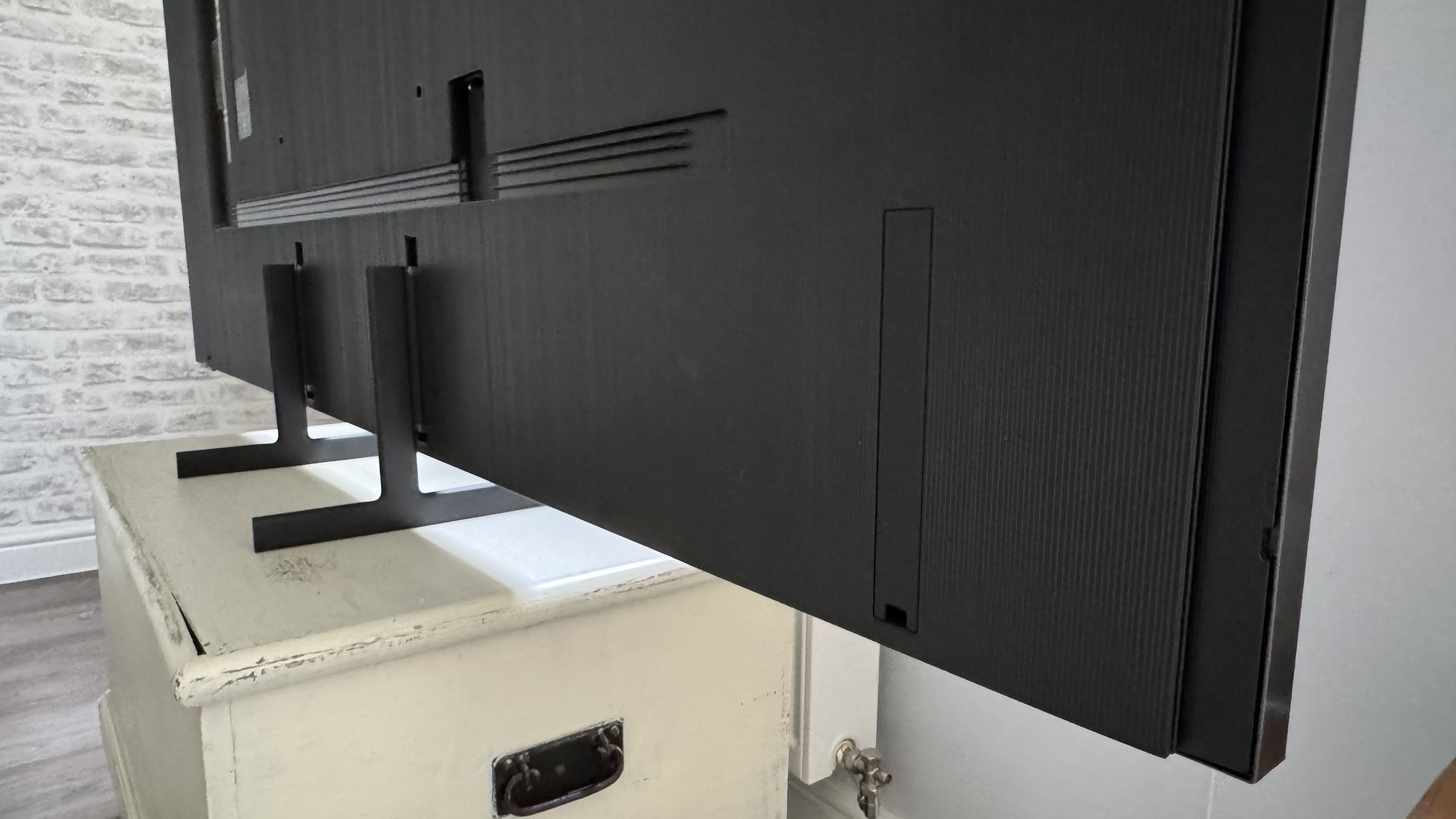
It’s tricky to make direct comparisons between the QN900F and its 8K predecessors, since Samsung hasn’t followed the same range naming conventions for its new range.
Get all the latest news, reviews, deals and buying guides on gorgeous tech, home and active products from the T3 experts
The QN900D was the brand’s flagship range for 2024, for instance, whereas in 2025 the QN990F takes the top spot, with the QN900F kind of taking the step-down place that used to be occupied by 2024’s QN800D series – without sharing quite enough DNA to be considered a direct successor.
It still uses the same NQ8 AI Gen 2 8K-optimised processor as last year’s QN800D, backed up by the same (seriously high) number of 256 neural networks, but it deploys substantially more local dimming zones (1446 at this 75-inch size, to be precise), as well as pumping out pretty much twice as much brightness. That's a combination of improvements that has the potential to seriously enhance its picture quality, especially with high dynamic range (HDR) content.
The QN900F also takes on a new design that resembles that of Samsung’s popular The Frame range of designer TVs, right down to its inclusion of a remarkably effective new anti-reflection screen filter.
The flagship QN990F, by comparison, ups the dimming zone count to 1920 (at the same scale); extends the gaming frame rate support to an unprecedented 240Hz; features a futuristic ultra-slim design; beefs up the audio by few 10s of watts; and carries a brand new 3rd-gen NQ8 AI processor with new AI enhancements (bolstered by a massive 768 neural networks).
Plus, for better or worse, the QN990Fs ship with an external connections box that sends picture and sound wirelessly to the screen (the Wireless One Connect Box, as it's called).
Design & Connections
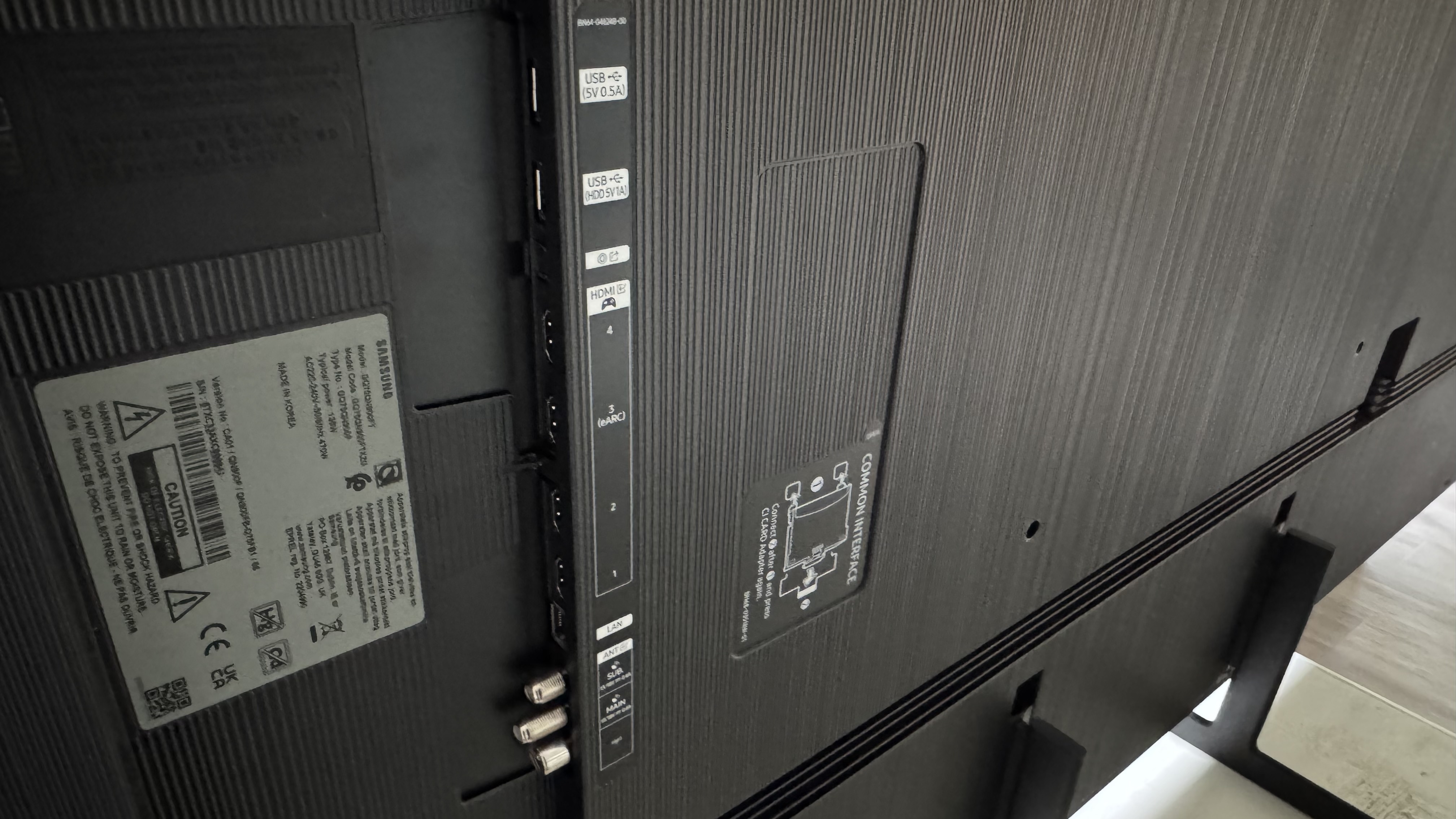
I’m a bit torn about the QN900F's looks. Its chamfered screen frame, built-in digital art gallery features/library, remarkably effective ambient light-rejecting screen and slender, flat, good-for wall-hanging rear panel help to sell the idea that the TV can transform into a digital painting when you’re not actually watching it.
I slightly miss the more minimal frame of previous Samsung 8K TVs, though, and I find the centrally placed pedestal-style stand of the QN990F models to be more attractive and ‘premium’ than the two desktop feet supplied with the QN900F.
You can choose whether you want to position those feet close together or far apart, though, and whether you want the screen to sit right down on them or raised a couple of inches to make room for one of the best soundbars.
It’s also a relief to find the QN900F considerably less of a brain-teaser to assemble than the QN990F is.
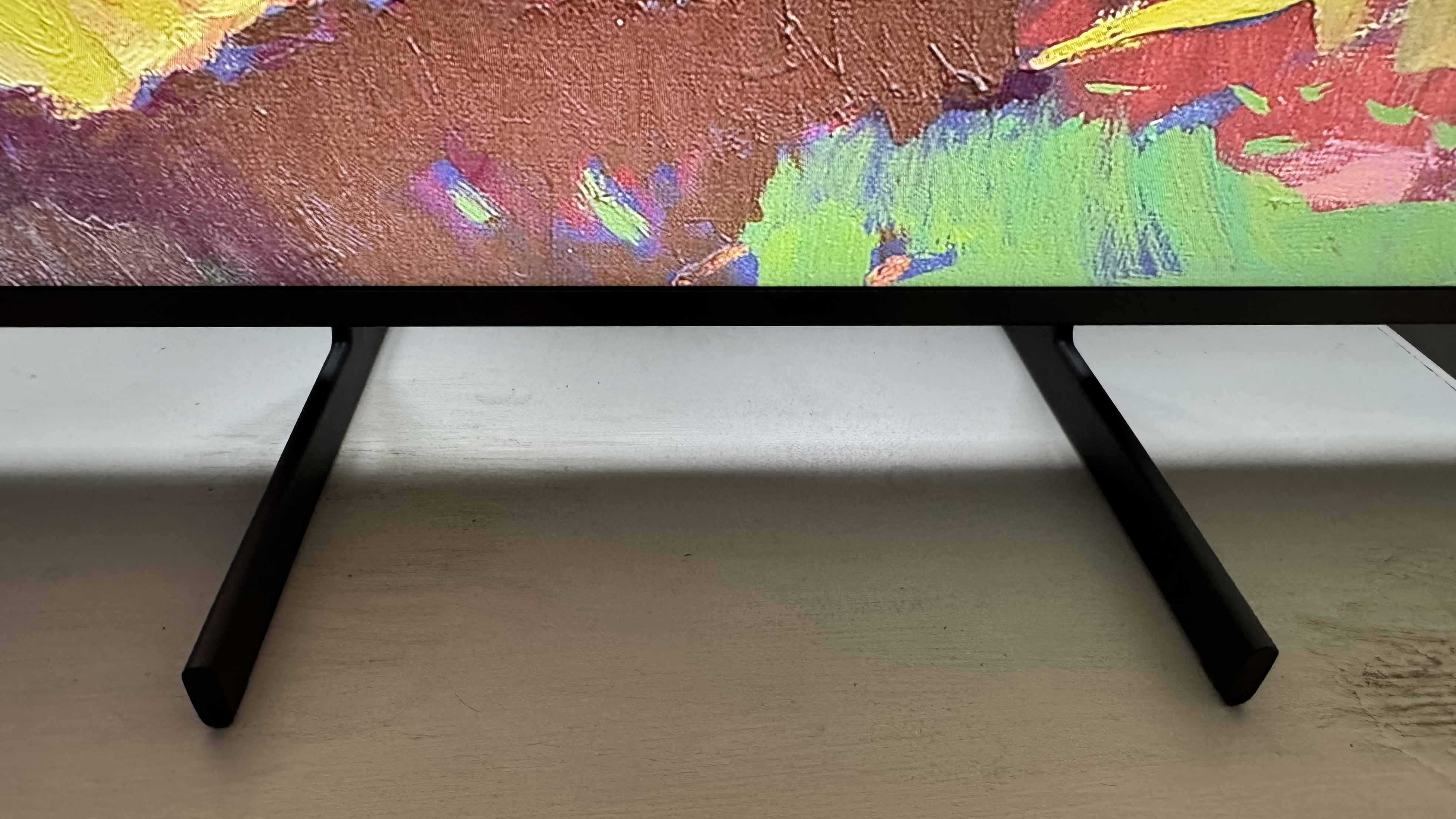
Unlike the QN990F, with the external Wireless One Connect Box, all of the QN900F's connections are carried on the main TV frame. And an impressive collection of them there are, too.
Four HDMIs get the ball rolling, all of which are configured for the full 48Gbps bandwidth monty offered by HDMI 2.1 standards. This makes them capable of receiving 4K/120Hz gaming feeds with HDR and variable refresh rates, including the AMD Freesync Premium Pro version of VRR if your PC or console supports that. In fact, Samsung’s Motion Xcelerator technology means it’s possible to get 165Hz frame rates into the QN900F.
The HDMI 2.1 Auto Low Latency Mode (ALLM) feature is provided, too, so that the TV automatically switches to its fastest responding Game mode when a game source is detected.
One last point worth making in this section is that the QN900F ships with two remote controls: a standard (but still actually easy to use) chunky one packed with buttons, and a slender ‘smart’ one with a stripped-back button count and a solar panel on its rear to save you having to ever replace its batteries. The smart remote carries a built-in mic to support the QN900F's Bixby and Alexa voice control options.
Picture Quality
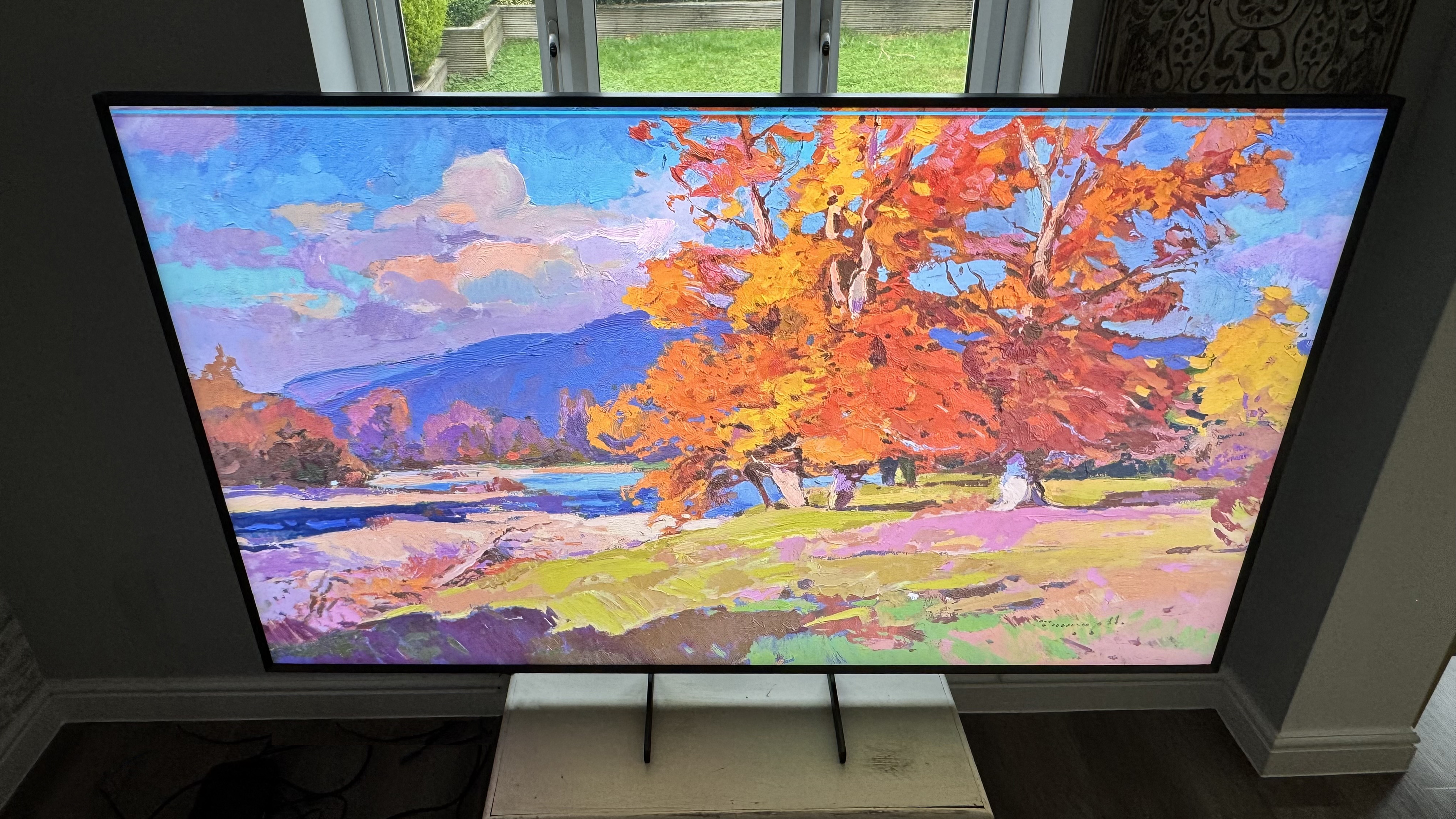
The QN900F clearly needs to truly excel in the picture quality department if it’s to justify the fact it costs more than Samsung’s flagship 4K LCD TVs for 2025, the QN90F. Happily, that’s exactly what it does. In fact, it’s so good it deserves to make believers out of the most adamant 8K naysayers.
Since it’s so critical to the QN900F’s message, lets focus on its 8K case first. Inevitably the benefits of those 7680 x 4320 pixels are at their most emphatically obvious when you’re watching native 8K content. There’s a sense of directness to such pictures, a feeling that you’re looking through a window rather than watching a TV, complete with all the clarity, naturalism and depth of field that implies, that you don’t feel with even the best 4K TVs.
You don’t automatically get this sort of effect with all 8K TVs, I should add. If you’re watching an 8K TV which, like the QN990F actually, has a few flaws in some secondary parts of its picture make up. Once you’ve seen a TV as talented as the QN900F doing what I guess it was at least originally intended to do with the ‘next generation’ of AV content, though, there’s no denying that 8K can make a difference.
As we said in our review of the QN990F, you do appreciate the 8K difference most keenly if you’re closer to the screen than you might normally choose to be. When all those pixels are backed up by as many other picture quality strengths as the QN900F delivers, though, the feeling of extra immediacy and sense of depth hold up from any sensible viewing distance. Especially when bolstered as it is in the QN900F’s case by basically zero interference from any ambient light or bright object reflections lying across the screen.
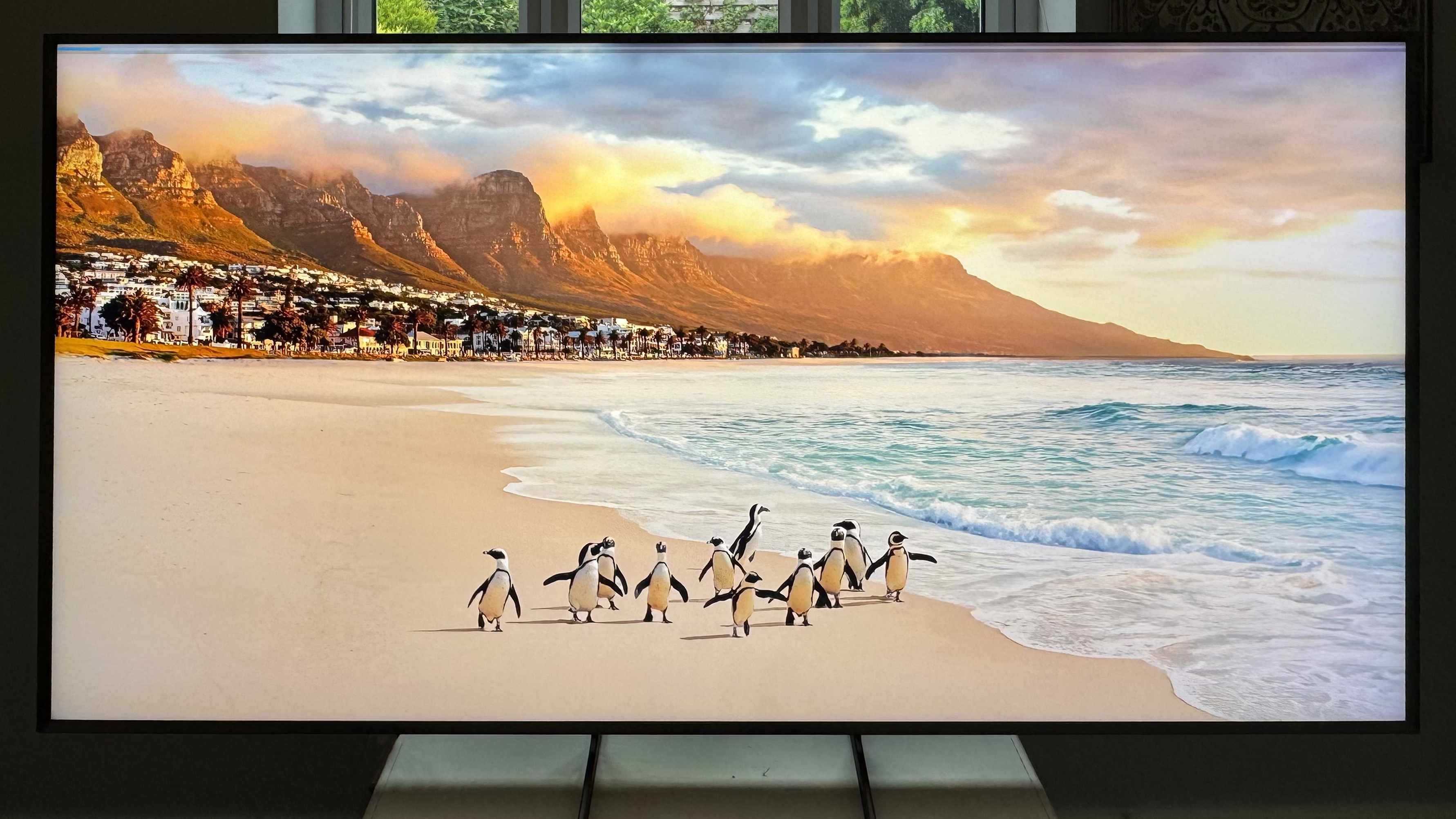
Exciting though this native 8K experience is (and there are actually a few respectable looking 8K files on YouTube these days if you look hard enough), it’s arguably how good the QN900F looks with 4K content that matters the most. So I’m happy to report that it looks very good indeed.
The upscaling processing for converting 4K to 8K is seriously outstanding, genuinely managing to make 4K sources look more detailed, textured and sharp than they can look in their native form.
This is impressive enough in itself, but the QN900F adds all of the pixels it needs to while also retaining all the screen’s other excellent picture qualities that I’ll get into in a moment – including vibrant but not over-the-top colours, outstanding contrast and brightness, and even (after a bit of work) strong motion handling that doesn’t force you to lose the benefits of all that 8K resolution in either hardware judder or motion blur.
The QN990F’s upscaler is a touch cleverer in some ways – especially when it comes to the clarity of small moving objects. But there are also ways in which I prefer the QN900F’s upscaled pictures – especially when it comes to motion, backlight stability and even their resulting colour and contrast.
The QN900F’s upscaling talents even make HD sources look immersive and engaging, doing a particularly incredible job of removing noise from HD sources – even quite compressed ones – before adding in the necessary 10s of millions of extra pixels. It’s fair to say the primitive and messy upscaling that gave upscaling a bad name back in the early days of HD TVs is very much a thing of the past.
Even standard-def (SD) content is at least watchable on the QN900F – not least because, again, the set’s noise recognition and removal capabilities are so profound. The results with SD do look a little soft – but if you’ve bought an 8K TV and aren’t prepared to do everything in your power to avoid feeding it SD content, then you’re more than a bit silly, really.
Important and impressive though the QN900F’s upscaling talents are, the TV’s talents in pretty much every other picture area are equally key to its success.
Contrast is fantastic, for instance. The full potential of that nearly 1500 zones of local dimming is unlocked by a combination of Samsung’s long experience with premium LCD TVs and the brainpower of the NQ8 AI processor, resulting in some of the deepest but also most nuanced and detail-packed dark scenes/picture areas I’ve seen on an LCD, sitting right alongside peak brightness levels that leave much of the rest of the TV world in the dust.
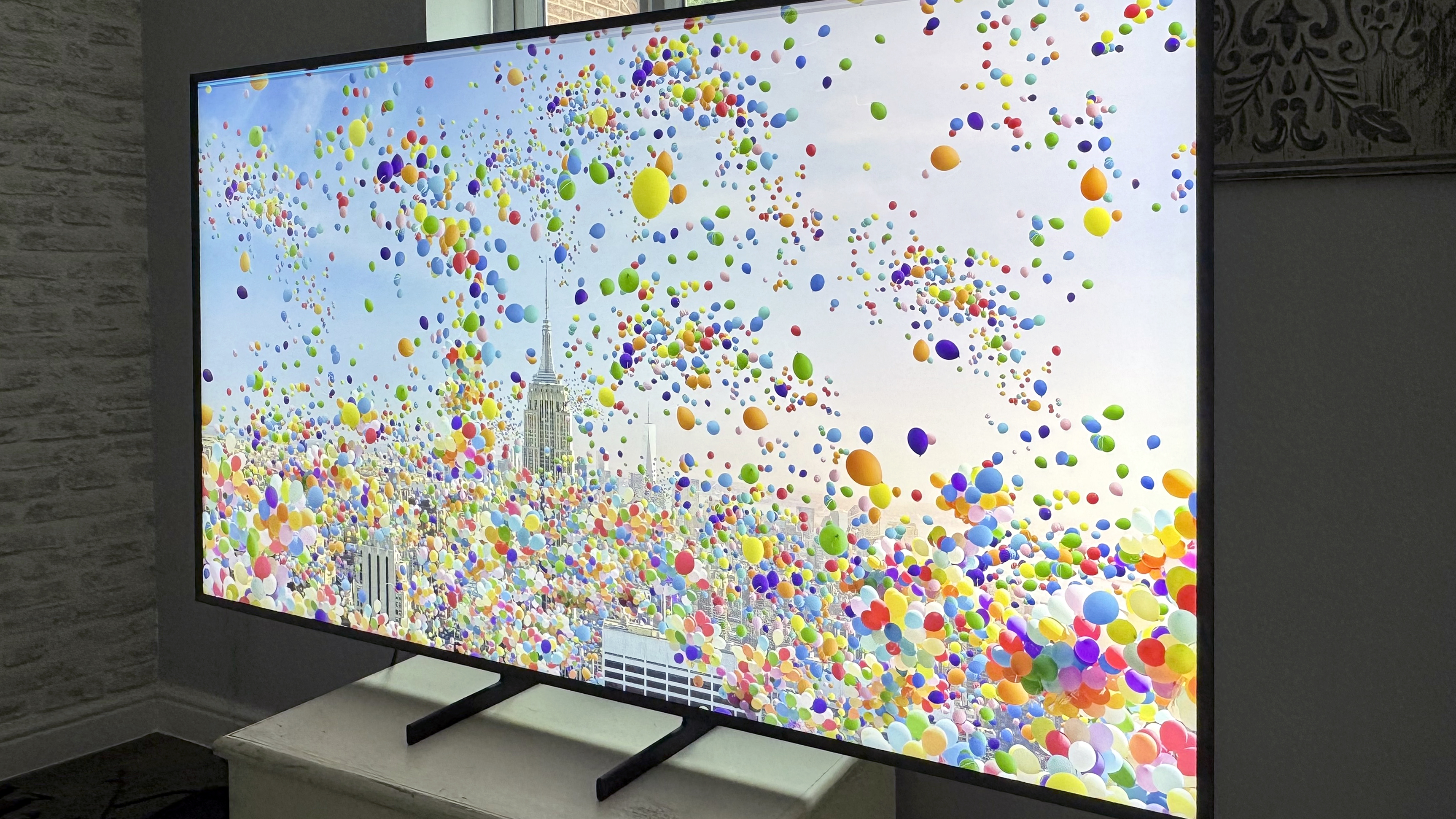
Despite the intensities of light and dark that share the QN900F screens, bright objects that appear against dark backdrops neither cause obvious clouding to appear around them, nor get dimmed down to stop such clouding ‘halos’ appearing.
The brilliance of the QN900F’s light output and light controls joins forces with a seemingly advanced Quantum Dot colour system to deliver breathtakingly rich and vibrant colours across a huge, HDR-friendly palette. These colours always look balanced and credible – even in the set’s relatively aggressive Standard picture preset – as well as always containing enough subtle toning, even in the brightest HDR areas, to avoid becoming cartoonish or flat.
The QN900F’s outstanding brightness is particularly noticeable and effective versus most of the rest of the TV world for how much of it remains in play when showing HDR shots that flood the whole screen with brightness. The best OLED TVs, in particular, have to dim such content down quite sharply, losing a little impact and consistency.
As with the QN990F, the QN900F does exhibit an unusually significant reduction in brightness if you switch from the Standard preset to the Filmmaker Mode preset. While this might initially put you off the mode though, the longer you watch it, especially in a dark room environment, the more you start to appreciate its gorgeous subtleties, naturalism and overall balance.
It also tracks the AV mastering world’s HDR and SDR picture standards impressively accurately, if that matters to you.
It’s really quite rare for LCD TVs to look as immaculate and engaging in both their bold Standard-type setting and most accurate movie/Filmmaker mode.
The QN900F’s pictures actually look slightly richer in saturation and bolder in contrast than those of its more expensive QN990F sibling. Their black levels tend to edge slightly deeper than the QN990F’s do, too, and there’s less chance of the QN900F’s processing throwing up unwanted side effects.
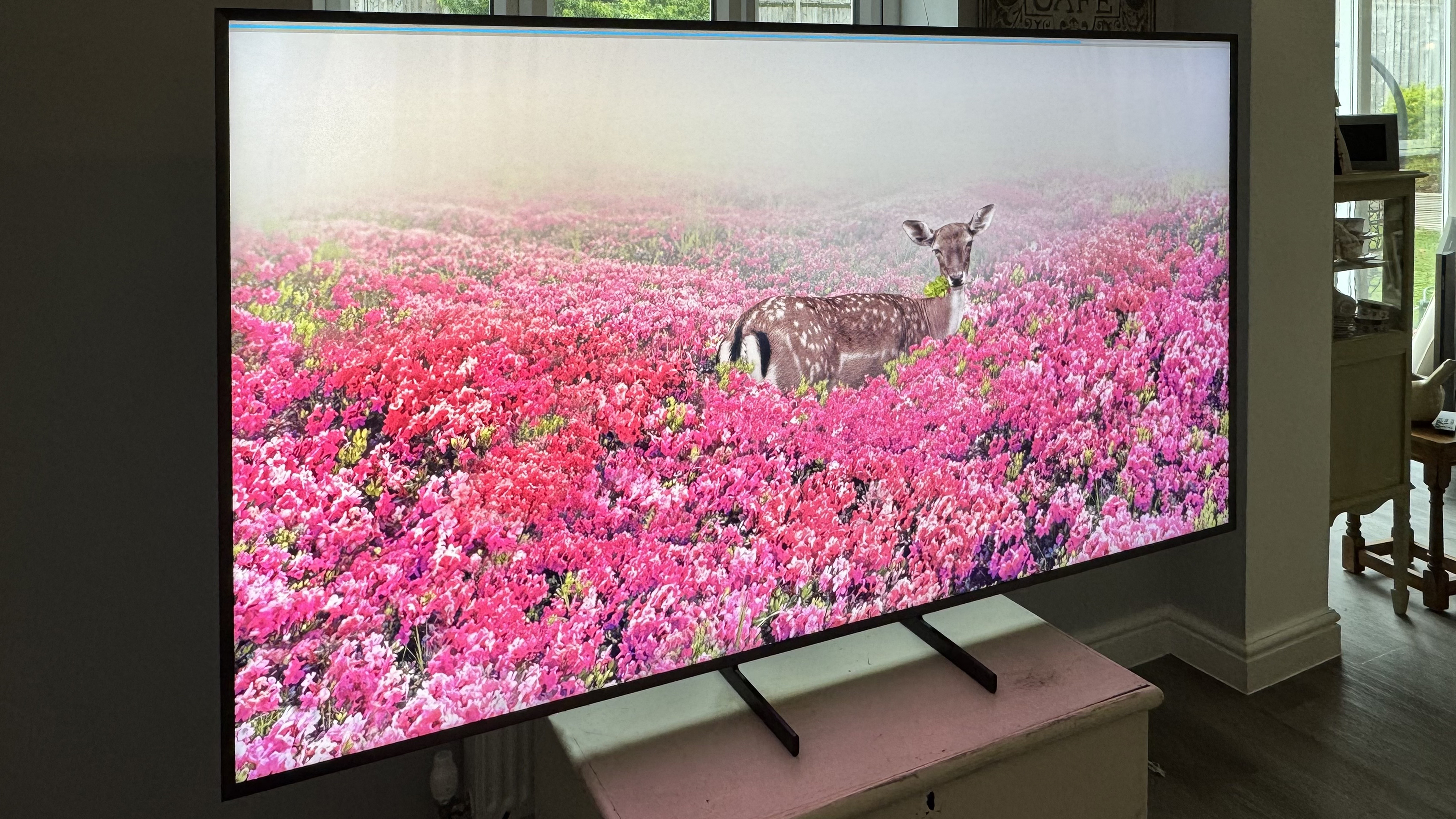
Gamers, meanwhile, will be pleased to hear that the QN900F suffer with only 10ms of input lag in their fastest-responding Game mode preset – way down on the 37ms caused by the wireless connection system the QN990F uses (unless you bypass this with the fifth Mini-HDMI port on that set's rear).
In fact, the QN900F is a gaming beasts, honestly, as the ultra-responsive images are bolstered by arguably an even more effective resolution boost from the 8K upscaler than video images get. Along with a repeat of the screen’s contrast and colour strengths.
There are only a quartet of minor issues with the QN900F’s pictures – two of which you can largely solve via the TV’s set-up menus.
The first of these fixable issues is that shadow detail can sometimes become lost in the inky blackness of a particularly dark shot – with the fix being to tweak a provided Shadow Detail option.
Motion handling out of the box is also a bit of a mess, too, causing too much ‘soap opera effect’ smoothness and too many distracting flickering and smudging side effects. The fix this time is to choose a Custom setting from the Picture Clarity menu area, and then set the Judder and Blur reduction components to between their three and five setting levels.
The niggles that can’t be fixed are the lack of support for the premium and popular Dolby Vision HDR system (you only get HDR10, HLG and HDR10+), and the way backlight blooming can suddenly go from practically invisible to quite distracting if you have to watch your QN900F from much of an angle. Though the practical viewing angles of this TV actually extend much further than those of most LCD TVs before colour and contrast start to fall away.
Sound Quality
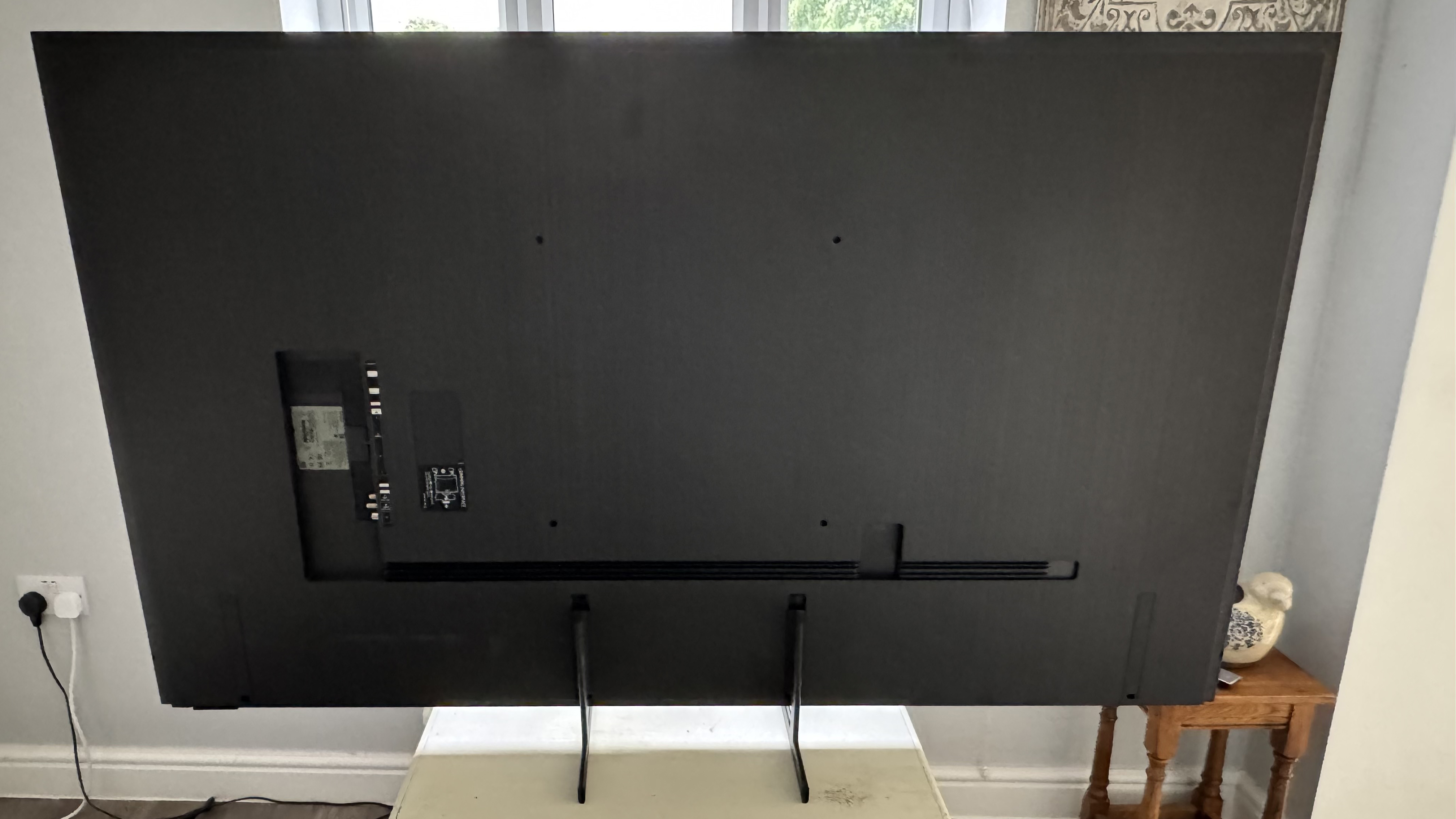
The QN900F can deliver 70W of power across a 4.2.2-channel speaker system. This robust audio set up can be used to deliver Dolby Atmos sound mixes more effectively than most integrated TV sound systems, and also benefits from Samsung’s Object Tracking Sound (OTS) system, where clever processing combines with the unusually high speaker count to make sound effects seem like they’re coming from exactly the correct part of the screen.
The OTS system can track multiple noise-making objects at once, as well as actually being able to extend its sound placement qualities beyond the screen’s outer edges. The result is a large, detailed, busy and immersive soundstage that comfortably avoids the ‘everything’s happening behind the screen’ issue that previous Samsung TVs have tended to suffer with.
Dialogue is presented cleanly and clearly without sounding too bright or detached from the rest of the mix, and the way OTS ensures voices seem to be coming from the right place on screen is extremely effective. There’s a genuinely helpful (AI-bolstered) dialogue boost system, too, that makes sure dialogue can always sound clear even if there’s a lot of ambient noise to contend with.
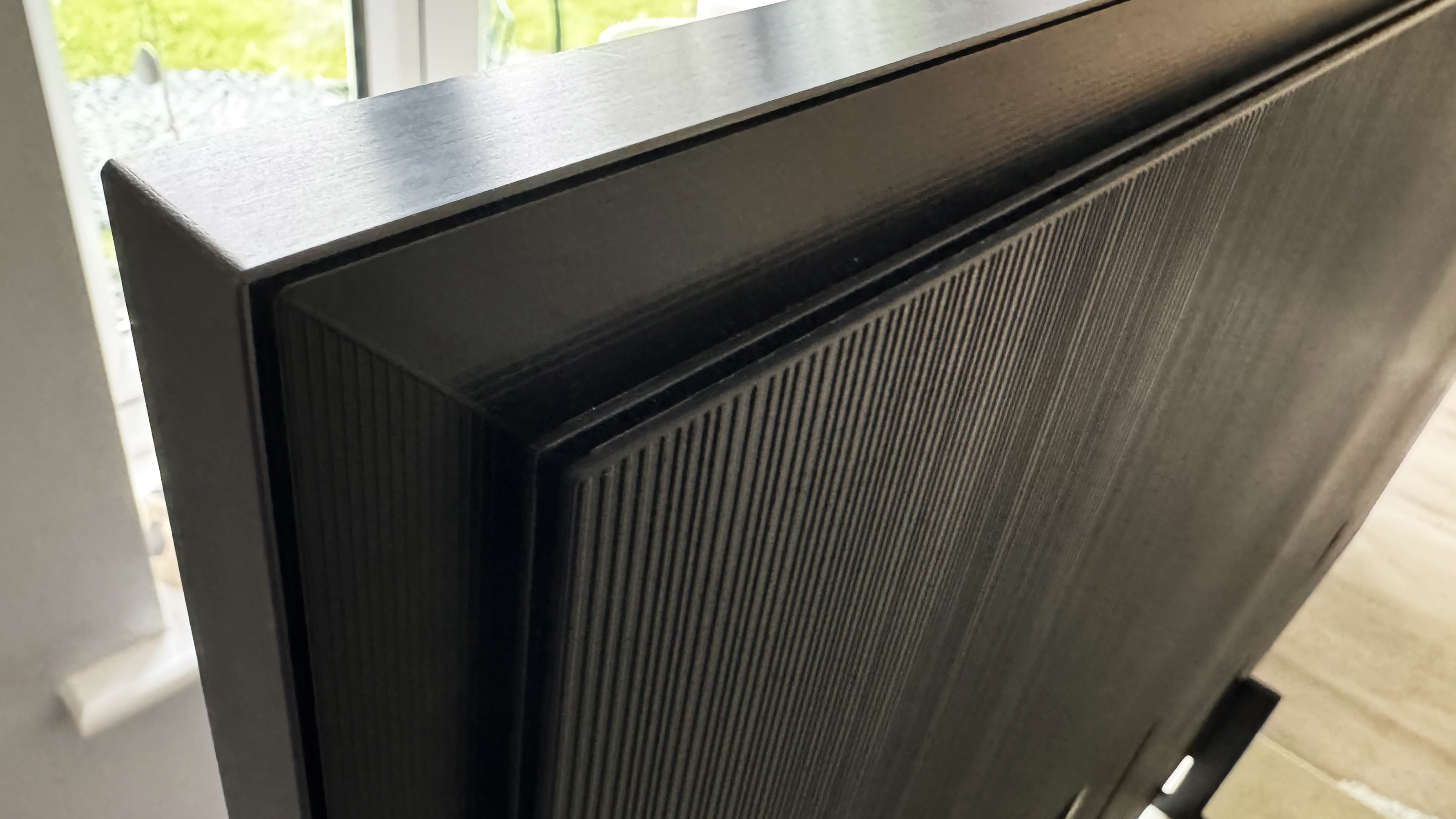
The speakers have enough power and dynamic range to deliver dense action scenes with plenty of impact and heft, and the bass speakers manage quite deep levels of bass by TV standards. Occasionally this bass can start to sound a bit trapped inside the TV’s bodywork, rather than rolling out around your room as low frequency sounds ideally should. Unlike many previous Samsung TVs, however, not even the deepest rumbles collapse into overt buzzing or sharp static distortions.
All in all the QN900F is the best-sounding Samsung TV I’ve heard in years – and just a little more bass impact and forward projection away from becoming one of the very best-sounding TVs in the AV world, ever.
That said, if you really want to ramp things up then you'll want one of the best soundbars for Samsung TVs, ideally a HW-Q990F, to deliver true surround sound and big bass from the included subwoofer. This also plays nice with Samsung's Q-Symphony tech, which continues to utilise the TV's speakers within the setup for a true wall of sound effect that's hyper-immersive.
Samsung QN900F review: Verdict
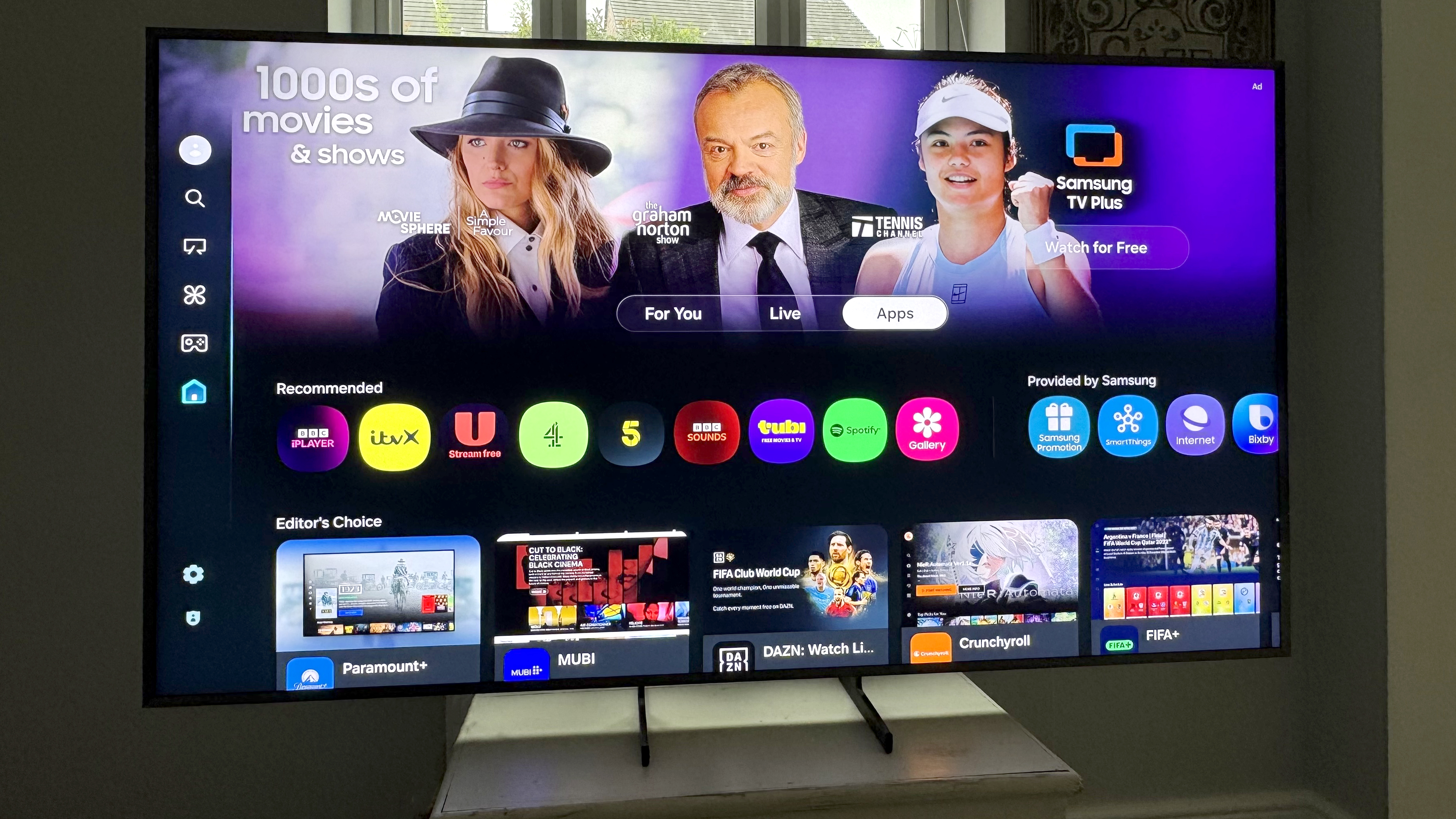
8K is worth it – if everything else is firing on all cylinders too. Fortunately, the QN900F manages to do what its step-up QN990F sibling couldn't: persuade us unequivocally that 8K TVs deserve a place in an AV world (even if it continues to show precious little interest in creating native 8K content).
For starters, while the all-important 8K upscaling system isn’t quite as extreme in its results as the system in the QN990F, it still makes 4K and HD images look significantly better than they would at their native resolutions. And I’d actually say its results are more natural to watch than those of its step-up siblings.
The QN900F's success isn’t only built on resolution, though. Not by a long chalk. Its black levels, contrast, brightness, and colour are all a class above the best 4K LCD TVs in Samsung’s current range, as well as unexpectedly outperforming the all-round picture efforts of the QN990Fs.
Throw in a strong multi-channel sound system, comprehensive connectivity, a stellar and feature-rich gaming experience and Samsung’s content-rich Tizen smart system, and you’ve got a TV that goes the extra mile in every direction to support and enrich its rare 8K charms.
Follow T3.com on Google News to keep our latest news, insights, and features at the top of your feeds!
Also Consider
The only other new 8K TV range for 2025 is Samsung’s own QN990F. These cost substantially more than the QN900F, but despite enjoying spectacular designs and showing flashes of genuinely next-gen brilliance, in the end they’re not actually as engaging all-round performers as the QN900F.
LG’s 2024-launched 77-inch 8K OLED TV, the OLED77Z19, has continued through to 2025, and really is a beautiful thing. But it costs an absolutely enormous amount of money.
If you want an OLED rather than LCD TV, you’d be better foregoing the 8K resolution and getting a premium 4K model such as the Sony Bravia 8 II or Samsung’s own S95F series.
John Archer has been testing TVs and AV gear for over 25 years, having worked on Home Cinema Choice magazine. He's a contributor to Forbes, TechRadar, Trusted Reviews, Wired and many more places – if you've owned a TV in the last couple of decades, John's probably reviewed it somewhere. He's seen so many hot new technologies come and go, like tears in the rain.
You must confirm your public display name before commenting
Please logout and then login again, you will then be prompted to enter your display name.

